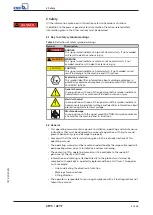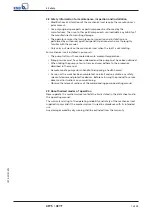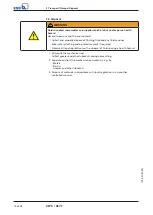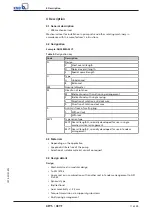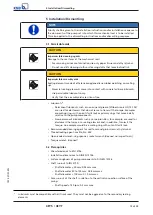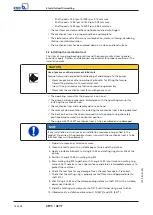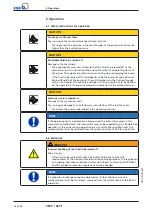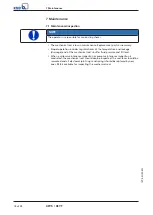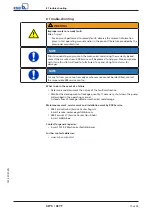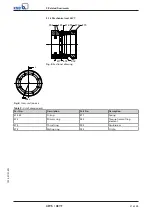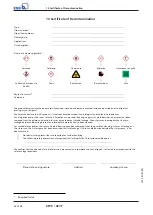
6 Operation
17 of 28
4EYS / 4EYT
1974.91/01-EN
NOTE
Any leakage must be drained off in a controlled way and safely disposed of.
Components which may come into contact with the seal leakage must either be
corrosion-resistant or must be adequately protected.
▪
For physical and technical reasons a mechanical seal cannot be leak-free.
▪
Leakage can be either in liquid or gaseous form. Its aggressiveness corresponds to
that of the fluid to be sealed off.
▪
The quantity of leakage is influenced by several factors:
– Seal selection
– Manufacturing tolerances
– Operating statuses
– Smooth running of the pump
▪
In the running-in phase of the mechanical seal higher leakage can occur.
6.3 Operating limits
NOTE
Always observe the operating limits in the product literature and the other
applicable documents.
NOTE
The following values are limits that depend on the seal face materials and
elastomer materials. As the characteristics influence each other, operation at
minimum/maximum limits is not possible for all characteristics at the same time.
Table 6:
Operating limits (nominal diameter, sliding velocity, maximum pressure to be sealed off and temperature
limits depending on the material combination and fluid.)
Type series
Nominal diameter
v
3)
Max. pressure to be sealed off
T
4)
min.
max.
Carbon/SiC
SiC/SiC
SiC/WC
min.
max.
[mm]
[mm]
[m/s] [bar]
[bar]
[bar]
[°C]
[°C]
4EYS
28
48
20
25
16
16
-10
+220
4EYT
33
48
20
25
16
16
-10
+220
Table 7:
Maximum temperature of the buffer fluid for mechanical seal 4EYT as
double seal (tandem)
Buffer fluid
Maximum temperature of the buffer
fluid
[°C]
Oil-based fluid (mineral)
80
Water-based fluid
60
NOTE
Take appropriate measures (e.g. cooling the reservoir) to ensure that the buffer
fluid does not exceed the temperature limits.
3
Sliding velocity
4
Fluid temperature
Summary of Contents for 4EYS
Page 1: ...KSB Mechanical Seal 4EYS 4EYT Installation Operating Manual...
Page 26: ......
Page 27: ......



